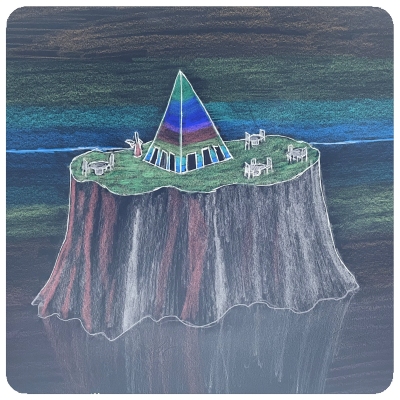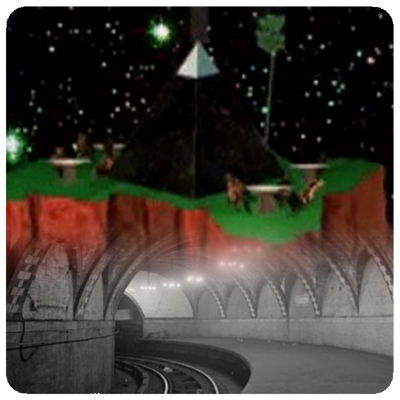
MVC Podcast 7: The Coffeehouse
& The Subways
[00:34:13] January 21st, 2023
Origin stories: young Charles Reuben in The Interdimensional Coffeehouse, and young Blythe in the abandoned Subways under New World Center.

or

or listen through
or the RSS feed.
For those who ended up here accidently, these are my recitals from “The Multiverse Cartographer.” Basically, a better place to start would be at the beginning of this series, which you can accomplish by clicking right up here.
Next up, we have two short chapters where we’ll meet the two main characters of the two stories made one, those being Charles Reuben of “The Interdimensional Coffeehouse,” and Blythe Clara Elbakyan of “The New World Empire.”
First, I’ll read it, then I’ll talk about it. Without further ado: THE COFFEEHOUSE
Charles Reuben was born in the early 21st century Gregorian, in the universe which Larry the Librarian identifies as Level 36-23-16-12 by 3-8-1-4-2.
His father, Dan Reuben, worked for The Perimeter Institute, and his mother, Jean, worked at CERN. They came together over a shared love of experimental research that they couldn’t get approved at their places of employment.
When Charles was about four years old, he spent his afternoons playing in the backyard by himself. There was a tire swing hanging from a rope, and a small clubhouse in the back where he would entertain the family tortoise and his imaginary friends.
One day, while he was collecting and sorting various kinds of leaves, his mother called for him, “Charlie!” He came running.
She wiped some dirt off of his face and brought him in to wash his hands. She said, “Before you were born, your father and I opened a doorway to a magical place. It’s called The Coffeehouse, and from there you can meet anyone anywhere at any time. It was created by a man named Charles the Grey, who we named you after.”
Charles was very excited, “Can we go?!”
“Would you like that?”
“Yeah!”
She walked with him down the hall into the den where his father did much of his work. There was an old antique writing desk to the left, underneath the window on the western wall. Opposite the entrance to the room, on the northern wall, there was a dresser with some books and statues of odd-looking Tibetan Buddhist deities that Charles found fascinating, and usually a stick of incense burning there.
Young Charles Reuben walked into the den. His dad turned around in his chair, and said, “Did your mom tell you where we’re going?”
Charles said, “To a coffee house?”
His dad corrected him, “We’re going to The Coffeehouse.”
His dad approached the eastern wall, and placed his right hand against the wall. At first it was barely discernible. You could just barely see a changing of the color, and the quality of light there on the wall in the shape of a rectangular door.
Eventually, it became clearer. They were starting to see what was on the other side: The floor was green, and there were some tables and chairs, and there was the night sky.
His dad stepped through. Charles noticed a shimmery rippling pattern on the surface of the doorway as he did.
His mom turned to him and said, “Are you ready?”
His heart was racing, he was terrified, but he said, “I’m ready,” and they walked through.
It felt like coming up out of the surface of water, if a water surface could be vertical. He saw the patterns of the malachite floor, looked around and saw wooden tables. He realized that they were on an island. You could see the edge, and you could see the ocean beyond the floor. You could smell the ocean breeze, and the scent of freshly roasted coffee.
His dad went to go talk to somebody, but his mom stayed with him. As he walked to the edge, he heard whale song in the distance. He also noticed that there were other islands, and more behind them, and each island had what looked like a three-story mirrored pyramid, with three doors at the base on each side.
As he turned around to look where he had come in from, he saw a large mirrored pyramid. The door on the left side, at the base, led right back into the den. He looked right through it, and he could see the edge of dresser on the right, and the desk under the window.
As he looked out toward the islands in the distance, he could see that there were one or two people flying in between the islands.
His mother knelt down beside him and said, “Here everyone can fly. If you jump off the edge of an island you won’t fall in the water.”
Young Charles Reuben said, “How many islands are there?”
His mom said, “So many, that if you did nothing but count them for the rest of your life, you would not be able to.”
Charles asked, “Why are there so many islands?”
“Because they need to make room for all the people visiting The Coffeehouse right now.”
Charles walked to the edge of the malachite floor and looked down. He could see the sandstone cliffside extending downward into the crashing waves.
He saw all kinds of exotic looking fish traveling in schools. A whale came up for air in the distance.
Later, Jean and Dan left young Charles Reuben in the care of Clara, the Barista.
She kept an eye on him, except for a few moments she looked away. During those few moments, Charles Reuben snuck around the corner of the pyramid to a doorway that was pitch black and briefly, just briefly, stuck his head through the shimmering Rectangle to look around, but saw nothing.
“The Interdimensional Coffeehouse” story, and the character Charles Reuben, are the most autobiographical allegories I've written, with emphasis on allegory. There are several short stories in the Mouse books which are straight up autobiographical, much more-so than “The Interdimensional Coffeehouse” and Charles Reuben, but they are not allegorical, they’re literally autobiographical.
For example, in "The Small Grey Mouse and other short stories" there is the second story called "The Last" which is basically, word for word, beat for beat, my actual memories of the last few times I ever saw my dad. In "Smaller Mouse," the story called "Larry the Biker" literally took place about a month after he died.
"Gooey Bubble of Graven Images" happened pretty much exactly as it’s written, and the story called "Thoth" chronicles in detail one particular evening during my trip to Mardi Gras in 1997 with my mom and our friend Mark just a few months before she died.
There are a few others in those books that are autobiographical but between "The New World Empire” and “The Interdimensional Coffeehouse" the latter is the part that is autobiographical, though highly exaggerated and allegorical.
Charles Reuben and I were both born in Arcadia California in a universe where Henry IX didn’t survive to become an heir to the British throne. Chares Reuben was a bit younger than me, though, having been born in the early 21st century while I was born in 1978.
In my case, it wasn't The Interdimensional Coffeehouse that my parents introduced me to at a young age but, rather, Tarot Cards, Astral Projection, Meditation, Reincarnation, Ouija Boards, and things like that. They split up when I was about six which meant that, from then on, my time was divided between driving through the mountains and across country looking for “power spots” and communicating with spirits through quartz crystals with a grouchy but funny esotericist professor on the one hand, and Jet Skiing in Lake Havasu and snorkelling in Hawaii with the president of the Women’s Architectural League Pasadena chapter on the other. Different worlds, really.
In the next video in this series, the story presented in this chapter continues, and there are a few parallels to my life there as well, which I'll point out when we get to it.
For now, Charles, as I've mentioned, is my middle name. My last name is Reib. My dad once told me it was the shortened form of Reiben, that it was changed to Reib when our paternal ancestor emigrated from Germany, but I've yet to find any evidence supporting that. In any case, Reuben, in addition to being, as I mentioned, the tribe of Israel associated with Aquarius of the Golden Dawn Tablet of Shewbread, it also sounds a little like Reiben.
Charles Reuben’s dad's den is a little like my dad's den when I was growing up, though in his case he mostly kept the Tibetan statues in the living-room and other places, though I think there might have been one in the den on his antique desk. There was also an antique desk, obviously. Kim, if you're watching this, you would remember better than I where he kept those statues.
Another difference between Charles Reuben’s dad and mine is that my dad usually only burned incense while he was meditating, this particular Nyingma Tibetan Yogic chanting meditation, and he would put the incense stick out when he was finished. Also, he did that in a secret chamber hidden behind his bookshelf, back then anyway.
In some ways, Dan Reuben is a little more like me than he is like my dad. As you can see behind me, I'm the one with the room full of Tibetan Buddhist statues, and in here there is usually incense burning. I don't call it a den, though, I call it my office, or office-temple.
Dan was Charles Reubens' dad's name, and his mother was Jean. For me, Dan was the name of my dad's dad, and Jean was my mom's mom. I can't help but giggle at the idea of my dad's dad and my mom's mom being together. He was a Standard Oil executive in Shanghai circa 1919 to 1940, and she was a good protestant house-wife in Duarte in the ‘40s and ‘50s. It's just silly to imagine the two of them even having a conversation, let alone having a kid together, but one generation removed and their DNA did eventually combine, in me. It’s a strange world we live in. Half of my body is made of Dan and Jean, and the other half is Edward and Harriet.
Anyway, in my case, my dad was a college professor, and my mom was an architect. In Charles Reuben's case, Dan worked for the Perimeter Institute, and Jean worked at CERN. The Perimeter Institute is concerned with Theoretical Physics, including dimensions beyond the four we're accustomed to. CERN, of course, has the famous hydron collider which smashes small things into each other with magnets to see what happens, to put it simply. It seemed to me that these two kinds of specialists might come together to figure out how to open a door to another world, especially if they’re both interested in research they can't get approved at their places of employment.
I literally, at about age three, spent my afternoons in North Hasting Ranch Pasadena playing in the backyard with a tire swing hanging from a rope, and a small clubhouse where I would entertain the family tortoise and my imaginary friends, and do things like collect and sort various kinds of leaves.
Charles Reuben was named after Charles the Grey, the creator of The Interdimensional Coffeehouse, implying that Dan and Jean had opened the door before he was born. I was named after my maternal grandpa, Edward, who was as impressive to me as Charles the Grey would have been to Dan, Jean and Charles Reuben. He was an inventor, a self-made man, and was once Marilyn Monroe's supervisor when she was making parachutes in World War II, back when she was Norma Jean Doherty, which sounds like some alternate universe fiction but it's not.
Before I was born, while they didn’t literally open an interdimensional portal, unless you count the portal my dad and Poke Runyon opened near Giant Rock that one time, the vast majority of their adventures together, meaning my parents, happened before I was born. Hermeticism, ghosts, demonology, gurus, all kinds of fun stories of bygone times got passed down to me about the decade I missed, the ‘70s. I was there for ’79, but needless to say I don’t remember it very well.
So, The Interdimensional Coffeehouse itself was largely inspired by the E-Bar in Pasadena, but also influenced by all the coffee houses at which I used to hang out growing up, mostly Kaldi in South Pasadena, and Higley's in La Cañada. Gordon Beam was the owner of the E-Bar, which closed after I'd only had a chance to hang out there maybe three times, but shortly after my parents died, I lived at Gordon's house and he was a very big influence on me. In fact, the beginnings of “The New World Empire” I wrote in 1999 while I was living with him, at his house in Sierra Madre.
Gordon was another one who opened my eyes to ways of viewing the world, life, the universe, and whatever you could say is beyond that. My parents may have introduced me to The Interdimensional Coffeehouse, figuratively speaking, but in many ways it was Gordon who opened the many doors on the pyramids, allowing me free passage through them into worlds I'd never imagined.
When Gordon was young, he left California and spent many years in North Africa and Europe. The stories he told me of his epic journey planted a seed in my heart which eventually germinated and led to my own travels to Africa, Nepal, Bhutan, and eventually India where I've been living now for the past five years.
So, Charles Reuben is basically an exaggeration of me. When I wrote “The Interdimensional Coffeehouse,” I hadn't started traveling yet. I wrote it from 2015 to 2017, and a few months after I wrote the last chapter is when I left. I stopped writing about an imagined epic journey, and finally began living my own.
At the time that I wrote it, though, I had already seen many strange things. I’d lived in the temple of a somewhat medieval Christian cult in a warehouse in the Inland Empire, frequented New Age hippie communes, driven nuns from Mother Teresa’s order in a van with a soldier and a platoon commander bringing food, clothing, and good vibes to the people in the tent cities under the 4th street bridge, or near 7th and Santa Fe, and in Skid Row, I spent years singing in a Russian Orthodox choir, as well as holding hands in a circle with witches on May Day, sang in Hebrew in synagogues, and of course spiralled out of this world through doorways opened with various psychedelics in Joshua Tree, Santa Monica Pier, and elsewhere. All of these places and experiences might as well have been in different universes, unrelated to each other, but it all took place on one planet, in one time continuum, which in itself is amazing.
In this chapter, Charles Reuben's mom in a sense teaches him how to fly. Once, when I was 12 years old, I laid on my bed repeating the words, "I'm dreaming, I'm dreaming, I'm dreaming," as I slowly sank through the bed and the floor of my bedroom and came to be standing in the living room below. As the room came into focus, and I was vividly standing there, I was still repeating the words, "I'm dreaming." I was very excited, and ran up to my mom's room to tell her the experiment was a success. She showed me the playing card which she had left on the dresser for me to come in and look at if and when this day should come. It was face down.
I asked her a few questions, among them was, "How do you fly?" She told me, "You just jump, and keep going." After a long adventure, flying over the city lights in the night sky from place to place, I returned to my bed, laid down, and woke up back in my body. I told her about the experience, and when I got to the part about her teaching me to fly, the hair on her neck stood on end. She, of course, didn't remember any of the conversation I'd had with her during my astral experience, but when she was young, she'd asked her dad, Edward, after whom I was named, how to fly in dreams. He'd told her, in those exact words, "You just jump, and keep going."
In the house where we lived in Sierra Madre from about 1984 until 1986, we were two doors down from a place called The Pyramid House, which was a house shaped like a glass pyramid. My sister knew the girl that lived there, and we used to occasionally visit that house. Later on, in 1999, that house was just up the street from where I was staying at Gordon's, and I would often see it from the trails of Bailey Canyon. I bring it up because it was probably, subconsciously, part of the inspiration for the form of The Coffeehouse.
Another influence, though, I must admit, came from the aforementioned medieval Christian cult. While that label does in many ways apply, so too would a label like Victorian British Hermetic Society Re-enactment. If you’re curious, I have a whole podcast about all that which you can listen to by clicking right there. Anyway, part of the practices there involved using Tarot Trumps as doorways to enter into various astral levels. “Pathworking” they call it, working your way up the paths of the Tree of Life. There was also, in the higher grades, a room called The Vault of the Adepti in which there were 280 squares arranged on seven walls, each of which was meant to be a portal to a specific type of energy, you might say. Fire of the Moon, Water of Saturn, Mercury of Mercury, and other permutations of forces through which one could commune with very specific types of beings, and all of this was meant to be done stone cold sober, though there are some who, against the rules, combine these practices with the use of various substances.
That should be enough of an explanation to give you an idea of the various kinds of weirdness I was involved with mostly between 2000 and 2013. All of these things surely influenced the idea of The Interdimensional Coffeehouse. The three doors on each of the four sides, of course, is similar to the three gates on each of the four sides of the big gold Borg cube in the last chapter of the Book of Revelation.
Moving on, the many colored fish were, no doubt, inspired by the fish I saw while snorkelling in Hanama Bay Hawaii, where my mom and I used to go every 2 years or so throughout the 80's with the last trip being in 1991.
The bit at the end where Charles Reuben is left unattended and puts his head through a dark door is setting up for something that will happen in a later chapter called, "Larry the Librarian," which is the last chapter of "The Small Grey Mouse," probably the penultimate episode of “The Interdimensional Coffeehouse” podcast. It was the last episode of that podcast, which aired on June 19th, 2017.
There’s a bit more to say about The Interdimensional Coffeehouse, which I’ll save for a future video in this series. I think I’ve probably said enough about it for now, if not too much.
The next chapter in “The Multiverse Cartographer” takes place in “The New World Empire” universe. It’s called: THE SUBWAYS
Blythe was born free in the heart of The Resistance, underground in what were once the subway tunnels of New World Center.
“Thou knowest, Blythe, thine eyes were open from the moment of thy birth,” Blythe’s mother said, as she lay dying.
“Mama,” was all the thirteen-year-old Blythe could manage to say through the tears.
“Thine eyes were open, and thou wert breathing. Thou lookest me in the eye, and didst glance down at the umbilical cord, as if to remind us. We were just starring at thee in awe of what had come into the world.”
Blythe squeezed her mother’s hand. “’Tis not true, Mama, thou’rt making it up.”
Blythe heard the sound of giggling and turned to the stairs where many Red Birds had entered the subways moments before.
There she saw a girl her own age, with long black hair, wearing all red. She just stood there grinning at Blythe.
“I swear’t to thee,” Joanne insisted.
Blythe turned back to her mother.
“I shall always be with thee, Blythe.”
“Thou’rt not going anywhere!” Blythe cried.
“Takest thou good care of thy brother.” Joanne said with her last breath.
As Blythe wept, she looked back toward the entrance, but the other girl was gone.
One of those metaphorical doors I once passed through as a kid with my mom, and my sister, came in the form of a flight to New York City. Later, as an adult at the closing of 2005, I went there alone. I remember taking the subways back in 1988, and again in 2005 and 2006. In ’88, after checking out of our hotel, we wanted to explore the city a bit before going to the airport to fly back to California, but we were carrying our big heavy luggage around. In one particular subway station, we noticed some dusty orange street cones in a shadowy corner, so we hid our luggage there in the total darkness. A few hours later, just before heading to the airport, we returned to that station and our luggage was still there, thank goodness.
One night in 2005, I was very drunk at about 4am and trying to find my way back to the apartment of the friend I was staying with after a long night in Greenwich Village. I took the wrong train, and an employee behind bullet-proof glass told me I’d have to go up the stairs and cross the street and go down the stairs on the other side to catch the right train, but warned me to be very careful as it was apparently a very bad part of town. On New Year’s Eve, I watched the ball drop at Times Square, an over-rated experience, then saw many drunk people in Penn Station that night before returning to Greenwich village to get in even more trouble.
One thing that struck me about New York City was that most of the people there reminded me of people you might see in Pasadena except for two things: One, they talk a lot faster, and two, they lived in apartments that were very small and close together, where in Pasadena they have houses with lawns between them. Dramatic arguments between family members took place, instead of in the privacy of the home, in the shared hallways with apartment doors open, and the neighbours would simply walk by pretending not to notice on the way to their own doors.
The subways in particular always struck me. Of course, those same subways featured prominently in the movie “Jacob's Ladder,” as well as “Ghost” and many other movies and TV shows. Having seen them on screen so many times, and having visited them at age ten, and again at twenty-seven, sort of fixed them in my mind.
Now, I first chose them to be the setting of Blythe and the Rebels before my trip to New York as an adult, but after that trip I continued writing. I also remember going to the fast-food chain called Subway with my mom and seeing the wallpaper depicting scenes of the subways of New York back when they were new, in 1904.
Moving on from the subways, I want to mention another thing which helped these things come into focus. When I was a teenager, I heard somewhere that Nostradamus had used nutmeg to see the future. Since it is poisonous in larger quantities, this would have required building up a tolerance a little at a time. Being something of an amateur psychonaut at that age, and probably more than a little bit influenced by the idea of being just like Paul Atreides in the David Lynch version of Dune, I started building up a tolerance to nutmeg as well. The Spice. Well, one of ‘em.
After I was up to about half an ounce per day, I remember laying on the roof of a high-school friend at a party. A few people knew what I was doing, and began asking me questions about the future. What would it be like in 50 years? In 100 years? in 200 years? My answers to their questions greatly informed the setting of what would later become “The New World Empire,” the Drones operating the machines in exchange for credits they get to spend on various kinds of experiences and sensations being plugged in by their necks until they forget that they even have bodies. This was 2 or 3 years before “The Matrix,” mind you, though after “Johnny Mnemonic.”
Anyway, that particular rooftop was the rooftop of a high-school friend, as I mentioned, whose middle name was Blythe. Other than that, there is no etymological symbolism to the name of the character, only a personal anchor to that particular day, on that particular rooftop, having consumed far too much nutmeg.
Clara being Blythe’s middle name was something that was established much later with the airing of episode eight of “The Interdimensional Coffeehouse” podcast, when Charles Reuben meets Blythe at the original Coffeehouse before it was switched on and, upon hearing her voice, he thinks it’s Clara. He calls her Clara and she says, “How do you know my middle name?”
Elbakyan was added as her surname after I was inspired by Alexandra Elbakyan, the Kazakhstani creator of Sci-Hub, which allows anyone in the world to illegally access every scientific research paper for free. At that same time, I gave Simon the surname Schwartz after Aaron Swartz, who died in an effort to do something similar with all of the accumulated knowledge in the world. These two real-life hackers were living embodiments of the Rebel heroes of old in that story I had written a decade before I heard about them and their work.
Anyway, my mom used to tell me that when I was born my eyes were already open and I was breathing. This was due, no doubt, to my having been born over one month after my expected due date. I also had red skin, like I was sunburnt.
The girl with the red dress and black hair giggling in the background is, of course, Lucy. You might have guessed that, if you were paying close attention during the recital of "Timelines" and a few other things. Blythe and Lucy are the same age. For whatever reason, 13-year-old Lucy has decided to tag along for this particular raid on the Rebels. Later, she'll make reference to having been watching Blythe since they both were children. From the timeline, we know that Blythe's mother was murdered by Red Birds that day.
In this scene is also introduced, indirectly, Blythe's little brother, Baggit, who would have been an infant at that time, so he wouldn't remember it, at least not consciously. Blythe, and the village, as it were, the particular tribe of Rebels living underground, would have to be the ones to raise Baggit.
This is a very sad chapter. I've noticed that this is where a lot of people stop reading the Kindle version, as if to say, "Well if this is going to make me sad, I don't wanna read it!" That's their choice. From my perspective, though, the story is a process, and leaving at this point is a little like beginning open-heart surgery and then running out of the hospital bleeding with your heart hanging out because it’s too painful. Not that extreme though, obviously, since you're just reading a story, but still.
So, that about wraps it up for this video, and the background behind these two chapters. I hope you found it interesting. Please feel free to subscribe, if you’re still here and you haven’t already, and we’ll continue with the stories of young Charles Reuben and a slightly older Blythe in the next video recital.
Until then.
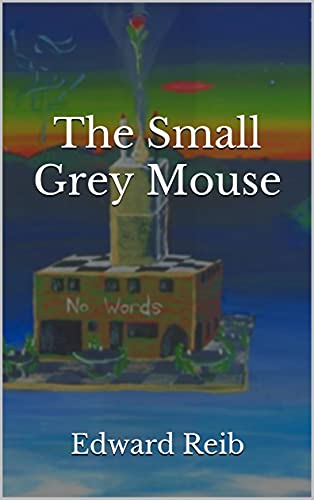 |
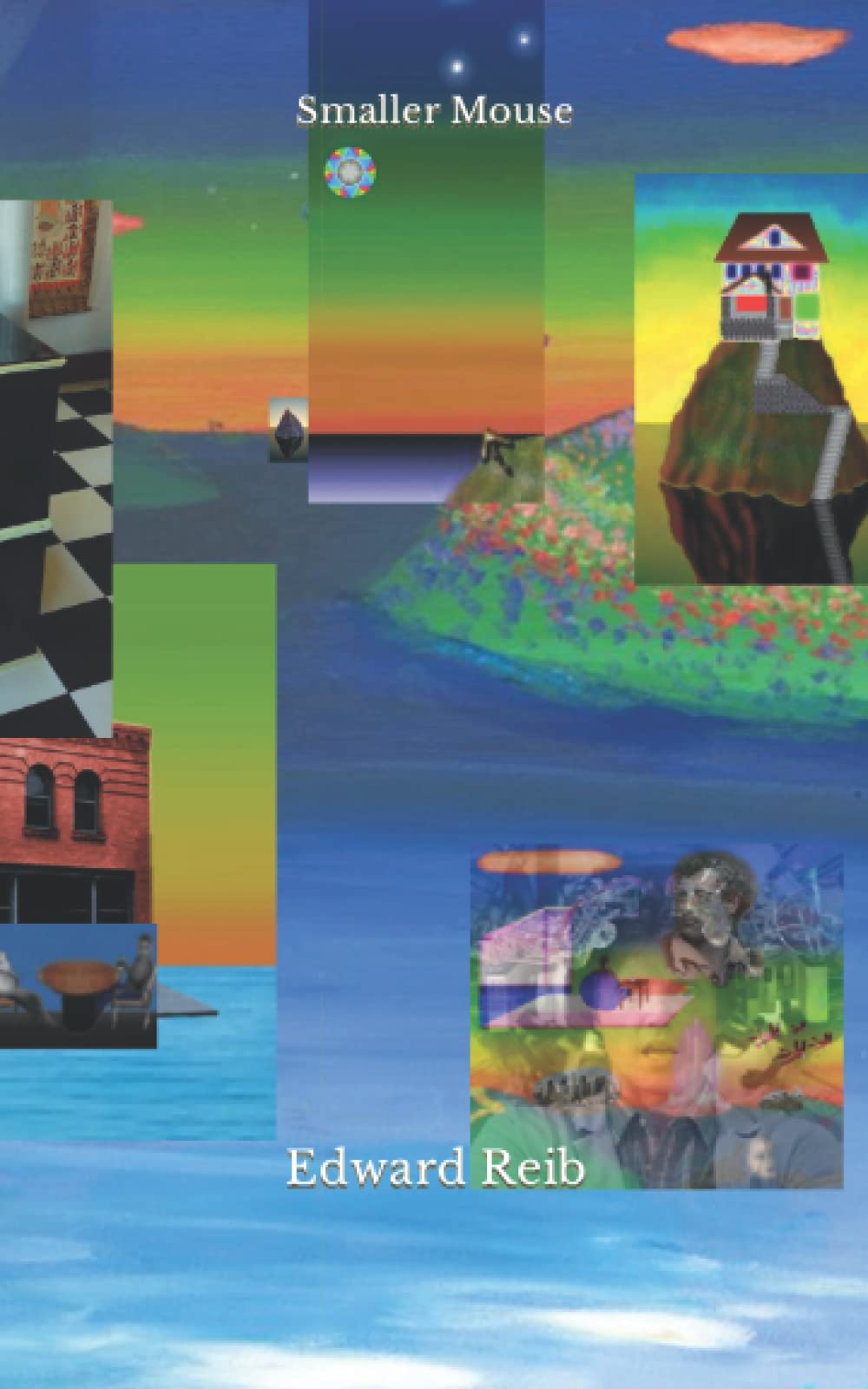 |
 |
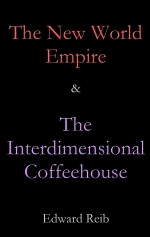
|
 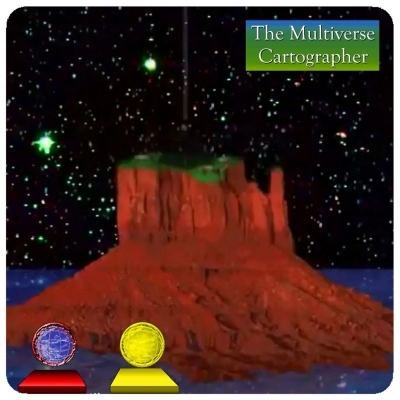 |
 |
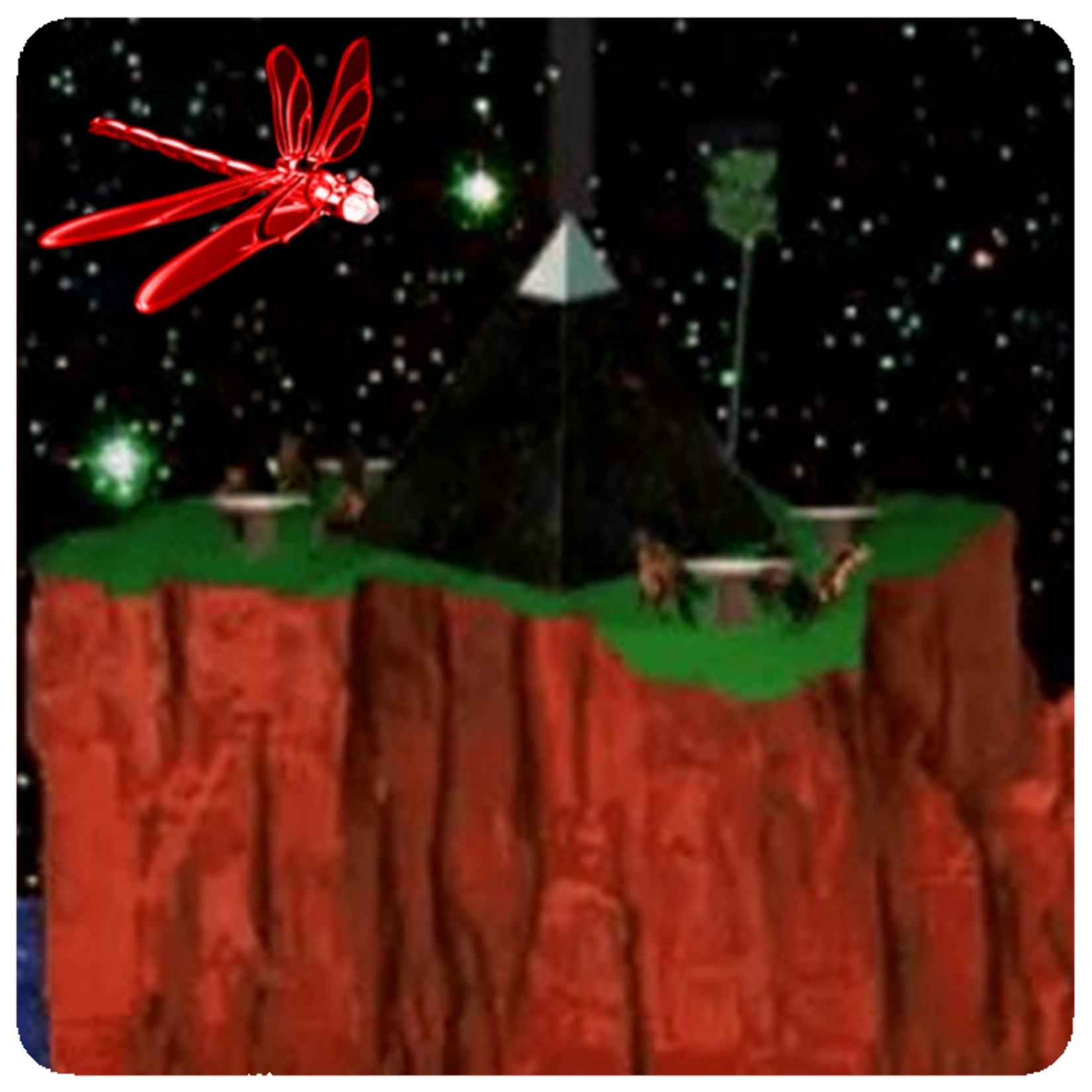  |
